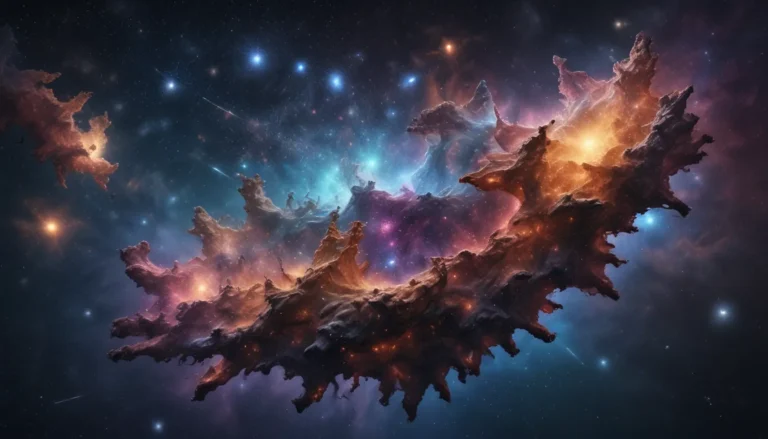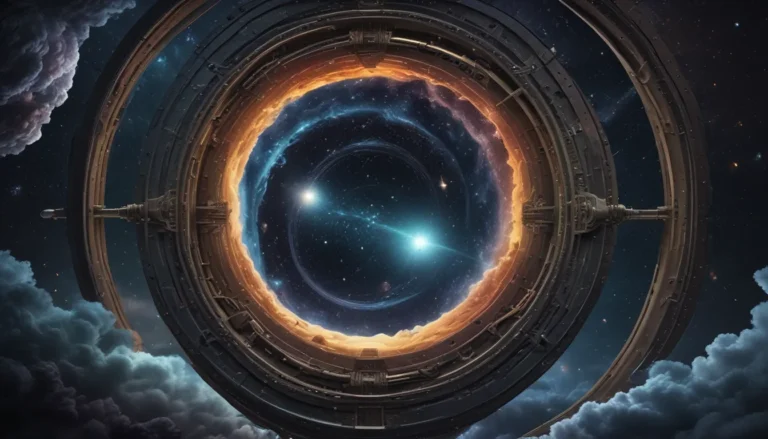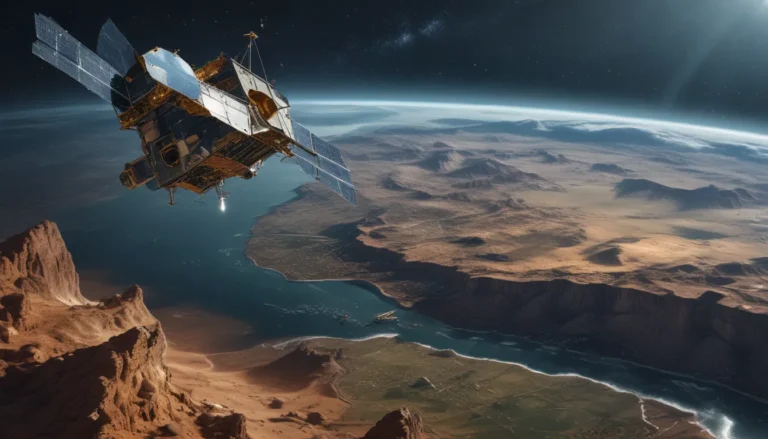The pictures we use in our articles might not show exactly what the words say. We choose these pictures to make you interested in reading more. The pictures work together with the words but don’t take their place. The words still tell you the important facts.
Space agencies like NASA, ESA, and Roscosmos have always captured the minds and imaginations of people worldwide. These organizations are at the forefront of exploring the vast expanse of the universe, conducting groundbreaking research, and pushing the boundaries of human knowledge. From awe-inspiring space missions to groundbreaking discoveries, these agencies continue to inspire wonder and fascination.
Exploring Space Agencies: Unveiling 12 Captivating Facts
In this article, we will embark on a journey through 12 captivating facts about space agencies. We will delve into the incredible achievements, remarkable projects, and fascinating insights that have been achieved by organizations such as NASA, ESA, and Roscosmos. So buckle up and get ready to explore the cosmos as we uncover the awe-inspiring work of these space agencies.
Key Takeaways:
- Space agencies like NASA, ESA, and Roscosmos have achieved incredible feats, from landing humans on the moon to discovering water ice on Mars, expanding our understanding of the universe.
- These agencies collaborate to operate the International Space Station, explore distant planets, and pave the way for future space exploration, inspiring us to reach for the stars.
NASA’s Apollo 11 Mission: A Giant Leap for Mankind
On July 20, 1969, NASA's Apollo 11 made history by becoming the first manned mission to successfully land on the moon. Neil Armstrong's famous words, "That's one small step for man, one giant leap for mankind," marked a significant milestone in space exploration.
ESA’s Rosetta Mission: Landing on a Comet
ESA's Rosetta mission, launched in 2004, landed the Philae spacecraft on comet 67P/Churyumov-Gerasimenko, providing valuable insights into the composition and origins of comets, expanding our knowledge of the early solar system.
The International Space Station (ISS): A Collaborative Endeavor
NASA, ESA, Roscosmos, and other space agencies collaborate to operate and maintain the International Space Station. This orbital laboratory has been continuously inhabited since November 2000, serving as a platform for scientific research and international cooperation.
NASA’s Hubble Space Telescope: Unveiling the Cosmos
Launched in 1990, the Hubble Space Telescope has revolutionized our understanding of the universe by capturing breathtaking images of distant galaxies, nebulae, and celestial objects. Its observations have led to breakthrough discoveries and deepened our knowledge of the cosmos.
ESA’s ExoMars Mission: Searching for Life on Mars
The ExoMars mission, a joint effort between ESA and Roscosmos, aims to explore Mars and search for evidence of microbial life. With missions like the Trace Gas Orbiter and the Rosalind Franklin rover, set to launch in the coming years, ESA is at the forefront of Mars exploration.
Roscosmos: Pioneers in Space Exploration
Roscosmos holds the record for the longest continuous human presence in space, with cosmonaut Valery Polyakov spending 437 days aboard the Mir space station in 1994. This achievement showcased Russia's dedication to long-duration space missions.
NASA’s Voyager 1: Venturing into Interstellar Space
Launched in 1977, NASA's Voyager 1 spacecraft made history by venturing beyond our solar system in 2012, transmitting valuable data about the interstellar medium. It continues to provide insights into the vastness of space.
ESA’s Mars Express: Discovering Water Ice on Mars
In 2004, ESA's Mars Express mission confirmed the presence of water ice beneath the surface of Mars, offering crucial insights for future exploration and potential colonization efforts of the Red Planet.
Roscosmos: Pioneers of Manned Space Missions
In 1961, Roscosmos made history by launching Yuri Gagarin aboard the Vostok 1 spacecraft, making him the first human to travel to space. This groundbreaking achievement paved the way for future manned space missions.
NASA’s Kepler Space Telescope: A Glimpse into Exoplanets
Launched in 2009, NASA's Kepler space telescope revolutionized our understanding of exoplanets by discovering thousands of distant planetary systems. Its observations have provided valuable insights into planets beyond our solar system.
ESA’s Cassini-Huygens Mission: Exploring Saturn and Its Moons
The Cassini-Huygens mission, a collaboration between ESA and NASA, provided unprecedented insights into Saturn and its moons, including the intriguing moon Titan. It showcased the beauty and complexity of the Saturnian system.
Roscosmos: Establishing a Lunar Base by 2030
Roscosmos has ambitious plans to establish a permanent human presence on the moon by 2030, paving the way for future lunar exploration and potential deep-space missions.
Conclusion: Embracing the Wonders of Space Exploration
In conclusion, space agencies like NASA, ESA, and Roscosmos have expanded our knowledge of the universe through their tireless efforts and groundbreaking missions. From sending astronauts to the International Space Station to exploring distant planets, these agencies have pushed the boundaries of human exploration and scientific discovery. As technology advances, we can expect even greater milestones in space exploration, unraveling the mysteries of space and inspiring future generations to reach for the stars.
FAQs: Exploring Space Agencies
-
What does NASA stand for?
NASA stands for the National Aeronautics and Space Administration. -
How many space agencies exist?
Several space agencies exist worldwide, with prominent ones such as NASA, ESA (European Space Agency), and Roscosmos (Russian Space Agency). -
What are notable missions by these space agencies?
NASA is known for missions like the Apollo moon landings, the Hubble Space Telescope, and Mars Rover missions. ESA has contributed to projects like the International Space Station and the Rosetta mission. Roscosmos is famous for manned missions to the International Space Station and spacecraft like Soyuz and Progress. -
How do space agencies collaborate?
Space agencies collaborate on international projects, with shared resources, expertise, and technology to achieve common goals in space exploration. -
Can anyone become an astronaut?
Becoming an astronaut requires extensive training, qualifications, a background in science, engineering, or aviation, and excellent physical and mental health. -
How do space agencies impact everyday life?
Space agencies contribute to weather forecasting, communication satellites, GPS systems, understanding climate change, inspiring future generations, and paving the way for scientific advancements.
As we continue to explore the wonders of space, let the remarkable achievements of space agencies inspire you to reach for the stars and unlock the mysteries of the cosmos. Join us on this exciting journey of discovery and innovation as we venture into the vast unknowns of the universe.






